'I was sick and tired of people knocking my city'

Jackson van Uden wants to share Peterborough's hidden gems
- Published
A historian is on a one-man quest to share his home city's many undiscovered gems.
Jackson van Uden, 26, has lived in Peterborough since he was five and its annual Katharine of Aragon Festival helped inspire his career.
Now a supply teacher, who is also doing a full-time PhD, he said he was "sick and tired" of people criticising the city and wanted to offer a positive alternative.
"It's one of the few places in the country that's got a bit of every period in history in a 20 minute radius and I'm sad about people wanting to knock it," he said.
"History is all around the city - in the centre, you can walk a minute and see a Norman cathedral, drive five minutes and see a Neolithic site or drive 20 and see a World War Two airfield."
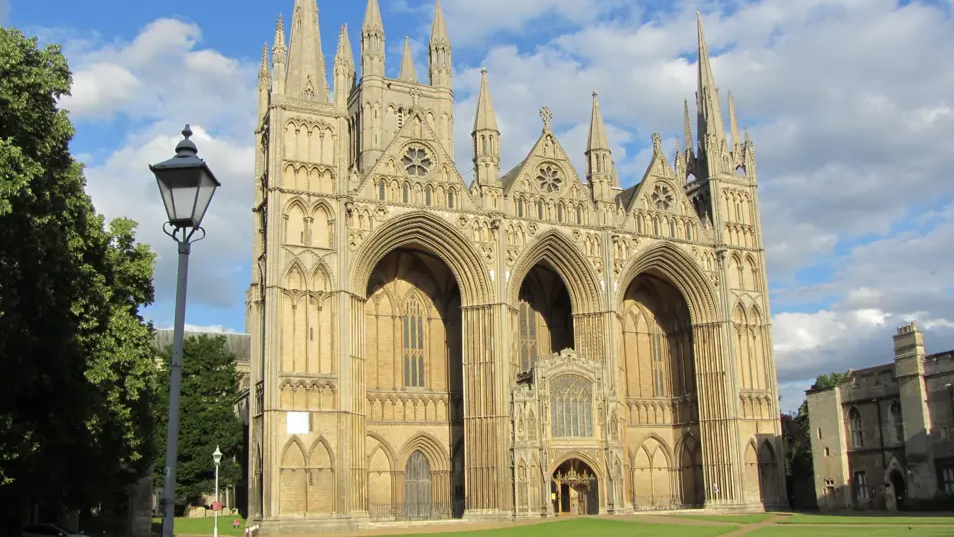
The city's vast Norman cathedral is where the remains of Henry VIII's first queen Katharine of Aragon are buried and deserves far more recognition, he says
When Mr van Uden went to university, fellow students had either not heard of Peterborough - or told him it was one of the worst places in the UK to live, according to satirical publication iLiveHere.
"Objectively it's not, although it is one of the poorest cities in the UK," he said.
As a supply teacher in the city, he sees "the wealth discrepancy pretty much every day - students who can't afford a new school uniform or basics such as pens".
"When I had to retire from rugby after massive injuries - it was a sport I played for 15 years - I was quite angry and I thought I could use that energy and this career as a historian for good, instead of letting everyone moan about the city," he said.

Mr van Uden fits in his PhD alongside working as a supply teacher, hosting discussions at history festivals (above) and running a history platform
Mr van Uden was named as one of BBC History's 30 under 30 history makers, external in 2024 for his platform History with Jackson, creating history podcasts and social media videos.
He has also joined the cathedral's Katharine of Aragon Festival as one of its directors.
"The country's leading historians come to give talks at it and when I was growing up, barely anyone came to Peterborough to give talks, so it's a way of giving back," he said.
"And I'm always trying to learn more about the city - so when I do videos, I regularly try to include something on Peterborough."
Here are three of the city's hidden history gems which deserve a wider audience, according to Mr van Uden.
'Not just the Tudors'
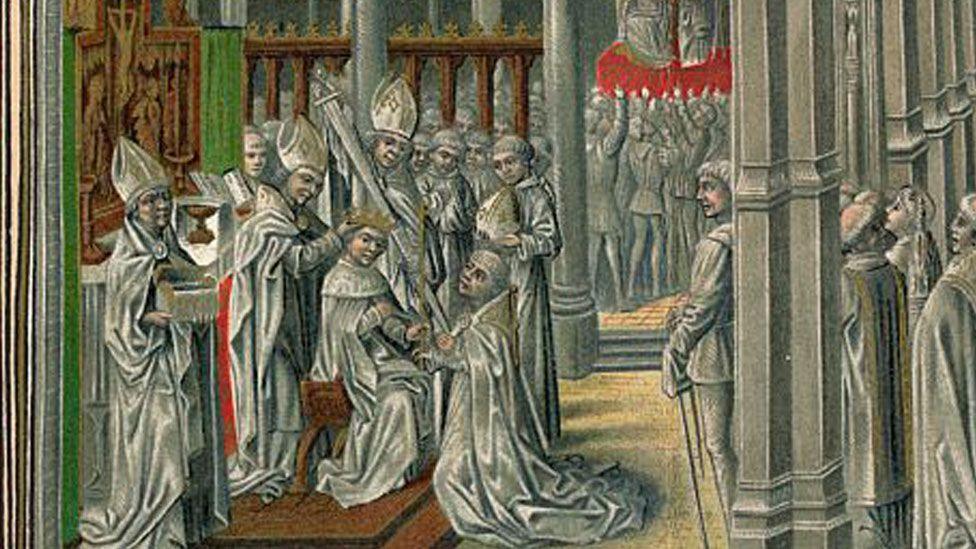
Henry IV's coronation, who usurped the English throne from his cousin Richard II, spent a lot of time in Peterborough with his first wife
"Peterborough's always been a place visited by royalty - and not just Katharine of Aragon and Mary, Queen of Scots," the historian said.
The cathedral is still the resting place of Katharine, Henry VIII's first wife, but was also where the Scottish queen's body was initially buried after her execution.
Mr van Uden said: "The medieval kings Edward I, Edward II and Edward III also visited the city - just as today, it was a major resting place when heading north.
"Edward III's heir the Black Prince (1330 to 1376) , externalspent part of his royal apprenticeship here at Peterborough Abbey, learning how to engage with key religious figures while also adding to his piety."
Another monarch with strong Peterborough connections was Henry IV, whose first wife the heiress Mary de Bohun, mother of Henry V, died nearby in 1394, external.
Mr van Uden said: "We have so many different associations with royalty - it's not just the Tudors."
'The pilgrimage tourist trap'

Medieval pilgrims would stop at Holywell Ponds as they travelled to Peterborough Abbey
Mr van Uden said: "I have to include Holywell Ponds - me and my mates spent a lot of time there growing up, it's a nice place to sit and hang out."
He grew up in the city's Longthorpe district, home of the medieval fish ponds, which supplied the lord of the manor with fresh fish all year round.
"I did some research on it and found it had a long history of being a site of religious pilgrimage, a hermitage for a holy man, possibly the 7th Century St Botolph.
"It was one of the stopping points for pilgrims on the way to Peterborough Abbey's shrines - essentially it was a tourist trap."
The pretty site also has a small grotto, possibly dating to the 17th or 18th centuries.
'Underrated, forgotten gem'

The Wheel of the Five Sense is one of many murals painted on the walls of the tower, painted by highly skilled medieval professional artists
"I've got to include Longthorpe Tower - my first school trip from primary school was to there and I was mesmerised by the building and its medieval paintings," he said.
This is a stone tower, built between about 1290 and 1300, which has "some of the most impressive examples of medieval domestic wall painting in northern Europe", according to owner English Heritage, external.
They include political, heraldic, religious and mythological references and images, naturalistic paintings of birds and other creatures.
Mr van Uden said: "It's been seared into my brain ever since - they're so underrated and forgotten about, it's one of those hidden gems that is overlooked.
"And it was owned by Robert Thorpe, one of the lord treasurers of England, so one of the most important politicians in England at that time who lived in Peterborough - again, it's not something we make enough of."
He thinks the city "often sees itself as the underdog and not deserving of any high status title".
"Yet we have a long history of people from Peterborough being important and we don't make enough of it."
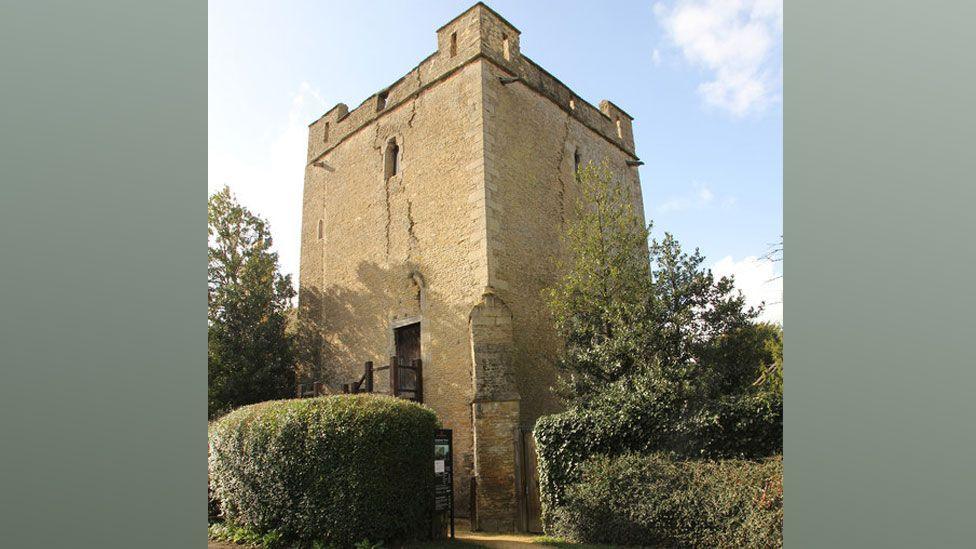
The tower is an unusual building to find in southern England, according to English Heritage
Get in touch
Do you have a story suggestion for Peterborough?
Follow Peterborough news on BBC Sounds, Facebook, external, Instagram, external and X, external.
Related topics
- Published23 July
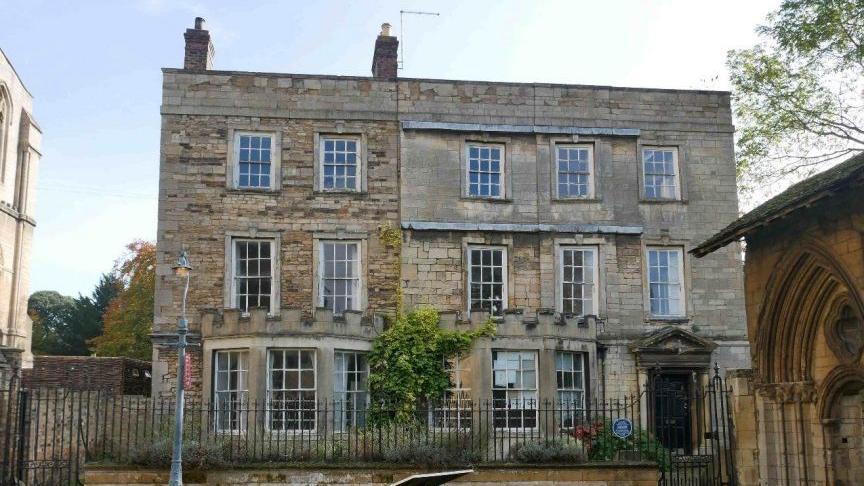
- Published22 January
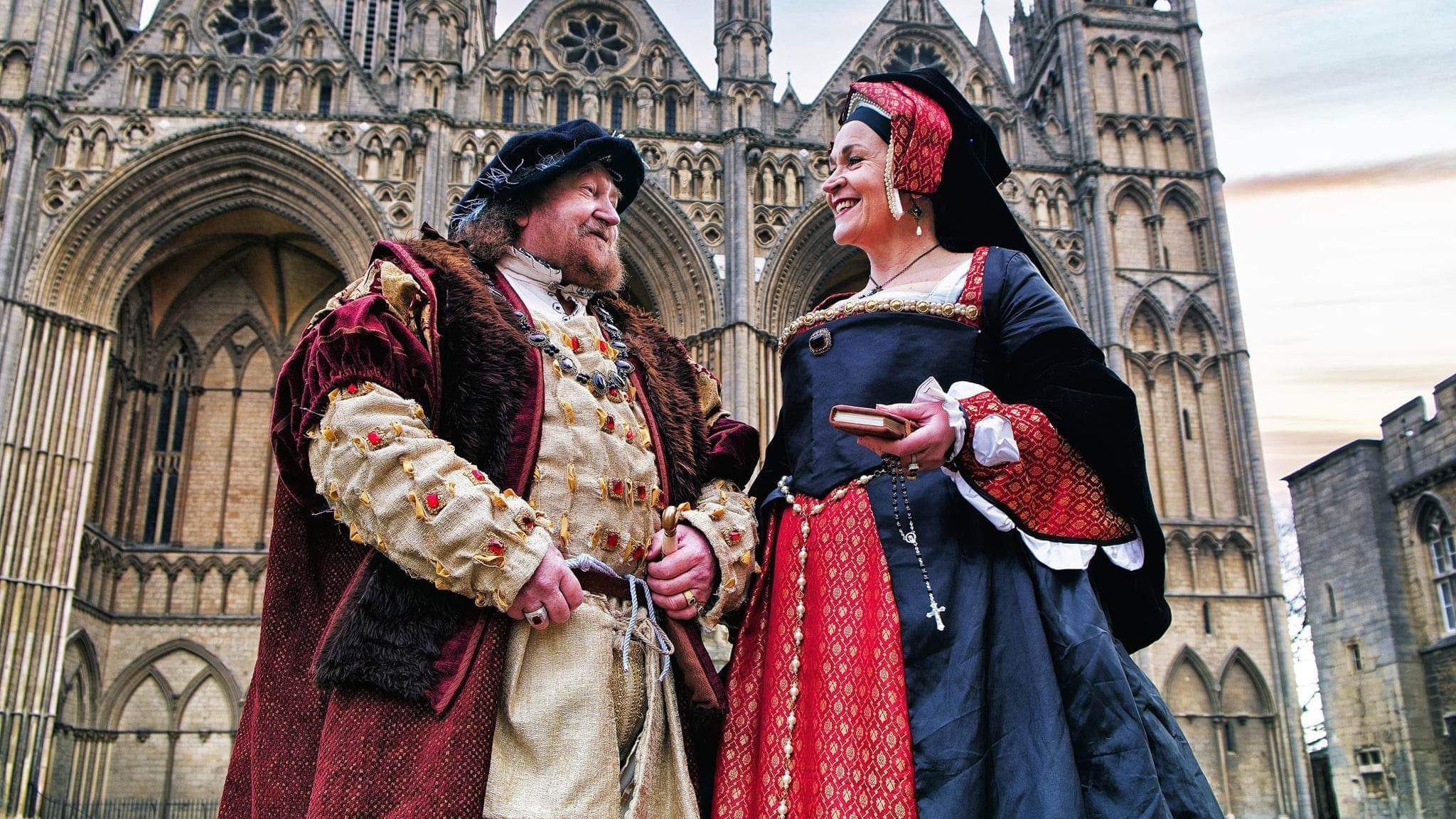
- Published26 July 2024
